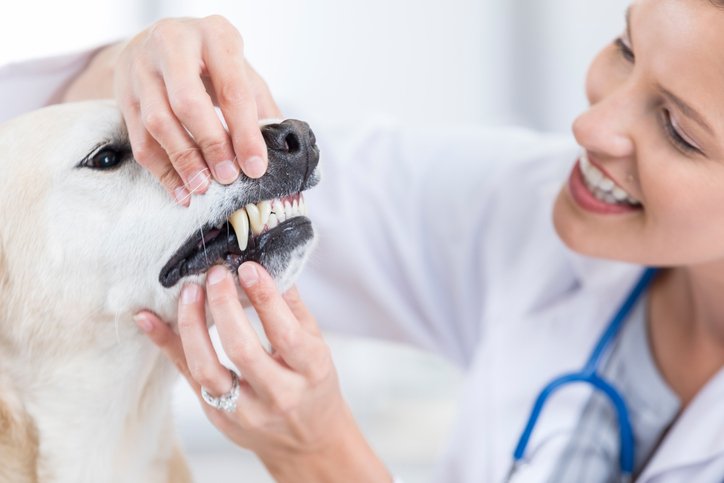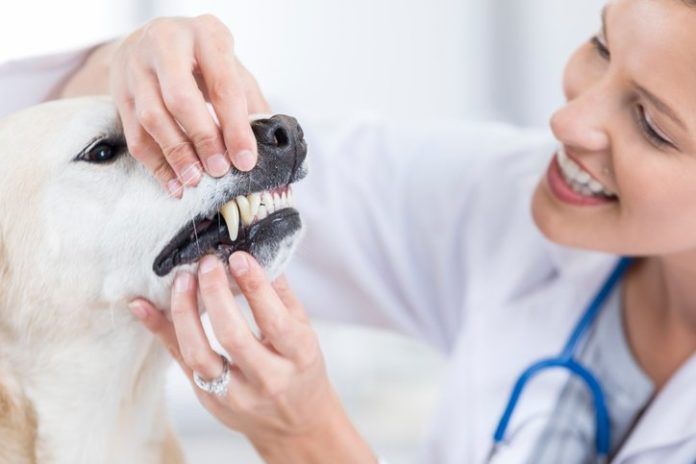Getty Images: Steve Debenport

For us, daily tooth care and regular dental visits are basic things that we do to stay healthy. But did you realize that our pets require regular dental care, too? Truly bad dog breath (not normal doggy breath) is one of the most commonly ignored problems in our dogs – and a sure sign of canine dental and gum disease.
Your veterinarian will examine your dog’s teeth and gums during his yearly wellness exam – another important reason to schedule these appointments like clockwork. For many dogs, yearly teeth cleanings will be enough to maintain their oral and dental health. But other dogs will require more frequent or even advanced care.
“If people brush their dogs’ teeth from the time they are puppies, they can delay professional cleanings – which require general anesthesia – until later in life, according to John Berg, DVM, Professor of Surgery at the Tufts Cummings School of Veterinary Medicine.
Additionally, with the right home care, the dog would be more likely to retain all his teeth and never suffer any mouth pain – which is something that can turn even the most pleasant pooch into a growling grouch.
Dogs and tooth loss
The reason is probably different than you think: Brushing is not intended to prevent cavities. Unlike humans, dogs rarely get cavities because their teeth have fewer pits and indents. Instead, you’re brushing your dog’s teeth to prevent periodontal disease, which progresses from plaque and mildly inflamed gums to gingivitis (canine gum disease). This could ultimately lead to severe periodontitis, which can include bone and/or tooth loss.
Daily brushing can also help prevent complications from various health conditions that tend to impact dogs as they get older. For instance, compromised teeth and gums – loaded with harmful bacteria – can be a source of infections elsewhere in the body.
Tools to brush your dog’s teeth
To get started, you should use a special dog toothbrush – a child’s toothbrush with soft bristles or a finger toothbrush. There are pet toothpastes on the market, flavored to be more palatable for your dog (think poultry, seafood and beef). Never use human toothpaste, baking soda or salt because these can be harmful to your dog’s health if swallowed. Ask your veterinarian or veterinary technician if you need some advice.
Once your dog reaches the age of five or so, talk to your vet about starting a yearly schedule for professional cleaning, which is the only way to effectively remove the tartar that accumulates beneath a dog’s gum line. (Helpful hint: The cost will more than offset any major dental surgery that your dog may end up needing down the road due to tooth and gum neglect.)
As regular maintenance, your vet may even encourage you to feed your dog a special dental diet. However, it’s a good idea to be sure that any food, treat, mouth rinse or chew toy contains the Veterinary Oral Health Council (VOHC) seal. VOHC recognizes dental products for pets that meet certain standards of plaque and tartar reduction.





